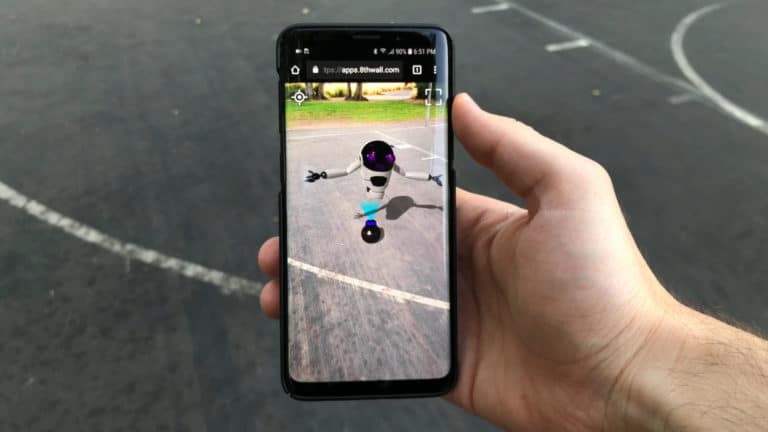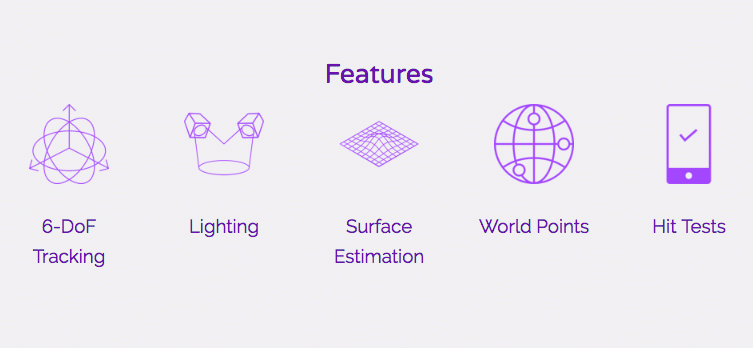
ARtillry Interviews is an ongoing series that profiles the biggest innovators in XR. Narratives are based on interviews with subjects but opinions and analysis are that of ARtillry. See the rest of the series here and our video interview show here.
There’s a growing realization that apps aren’t the best vessel for AR. Though they dominated the smartphone era, the friction involved in downloading them is incongruent with AR’s dynamism and short sessions. By the time you stop to download the requisite app, the moment may be gone.
This is reminiscent of Google’s smartphone construct of “micro-moments.” These are the content-snacking opportunities that the smartphone enabled: quick hits of Candy Crush or Instagram while waiting in the grocery line. AR use cases could develop that are even more micro.
But the question is, do you want to spend 90 seconds downloading an app for an experience that lasts 30 seconds? Or even for longer sessions like social and multiplayer games, the experience is hobbled by the need to stop and download the right app to be compatible with other players.
One dilemma is that apps have an edge in functionality including better integration with the camera, sensor calibration, IMU and other AR components. But web AR is gaining ground, given web XR development, efforts of the WC3 and companies like Google and Amazon Sumerian.
AR For Everyone
The latest company to join that list is 8th Wall. CEO Erik Murphy-Chutorian believes that while VR lives within finite buckets of time for entertainment, AR will happen throughout our day in a broader range of utilitarian functions. So it needs to be quickly accessible to everyone.
“The VR use case is entertainment, and I’m willing to sit in front of a movie and watch something because it’s entertaining and fun and I’ll spend those two hours on the weekend,” he told ARtillry. “AR is going to be much more fundamentally important in our world.”
This drove 8th Wall to get AR tools into the hands of more developers and users. And the result is 8th Wall Web, an AR engine that works entirely on mobile browsers. Built on standards-compliant JavaScript and WebGL, it has SLAM, positional tracking and all the trappings of “true AR.”
This wasn’t easy, given challenges of bringing app-like features to the web. The 8th Wall team did this by taking its existing SLAM engine and re-implementing it for the mobile web, piece by piece. That includes localization, light estimation, surface detection and other key components.
“There were a lot of reasons for why we couldn’t do that,” said Murphy-Chutorian. “So we just started knocking those out. Over the summer, we took down all the reasons that we first thought made it impossible to reimplement what we’ve done in XR on today’s mobile web browsers.”

Compatibility + Capability
Beyond sidestepping download friction, web AR brings greater scale through compatibility. This is because platform fragmentation diminishes the addressable market. Though there are 762 million compatible ARkit and ARCore smartphones, there are far fewer active AR app users.
“There are phone models that are supposed to support ARcore, but don’t have the software updates to run it or, more frequently, they don’t install it,” said Murphy-Chutorian. “So you have this whole class of devices that are capable, but no one has taken the effort to install the application.”
In addition to compatibility, 8th Wall Web was inspired by capability. Murphy-Chutorian realized that one reason gaming dominates mobile AR is that prevalent toolsets (read: game engines) are tuned accordingly. So that leaves a gap in capability for other functions like AR commerce.
“If you want to build e-commerce or marketing or advertisements, it’s not optimal for a game engine,” he said. “So there’s this big dissonance of ‘I want to be in AR, but I need tools to make that happen.’ So it’s a weird distortion of what the market should be for people that are using AR.”

Vertical Challenge
That philosophy has steered 8th Wall Web’s target verticals and use cases. It accommodates everything from advertising to education. Murphy-Chutorian cites storytelling and publishing as just one example. Think: AR infusions in a newsletter or website to bring products or narratives to life.
“I could read an article on a web page and view some interactive 3d experience mid-article,” he said. “You could be browsing and instead of a display ad, you have an AR ad. You can imagine newsletters with AR content [or] go to some website and a movie poster comes to life.”
As for next steps, Murphy-Chutorian is interested in getting this into the hands of developers. That includes creative agencies that build immersive content and brand experiences, but without having their reach — a key brand advertising metric — diminished by a fragmented app ecosystem.
“We want to get it in the hands of content creators,” he said. Our biggest challenge is visibility… We don’t have the type of marketing of an Apple or Google, but we’re going to try to grow this into a really awesome way to get started in AR today, and really make it AR for everyone.”
For deeper XR data and intelligence, join ARtillry PRO and subscribe to the free ARtillry Weekly newsletter.
Disclosure: ARtillry has no financial stake in the companies mentioned in this post, nor received payment for its production. Disclosure and ethics policy can be seen here.
